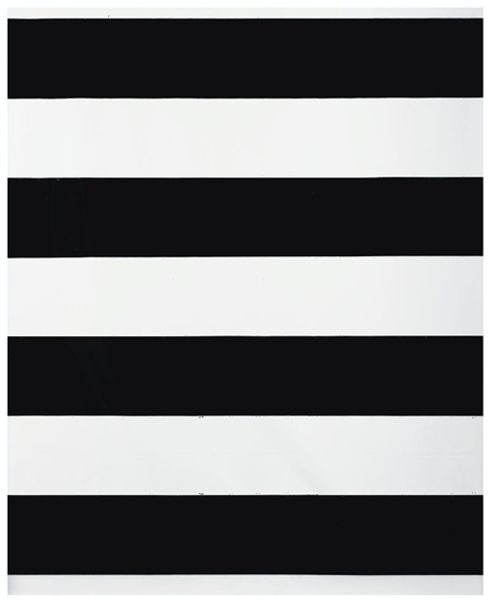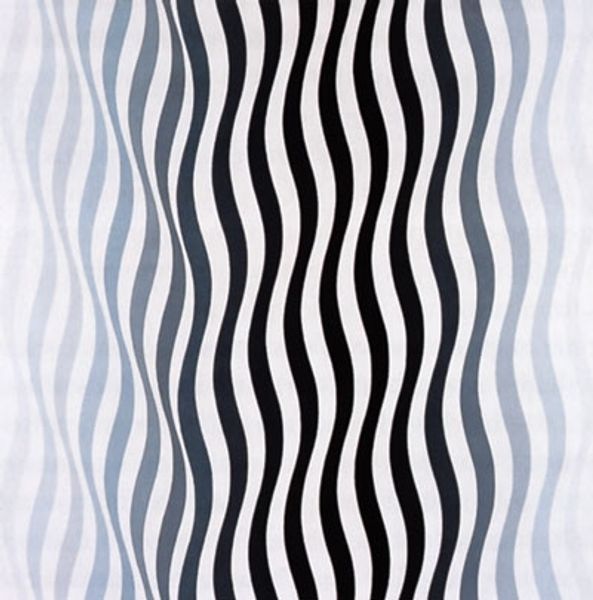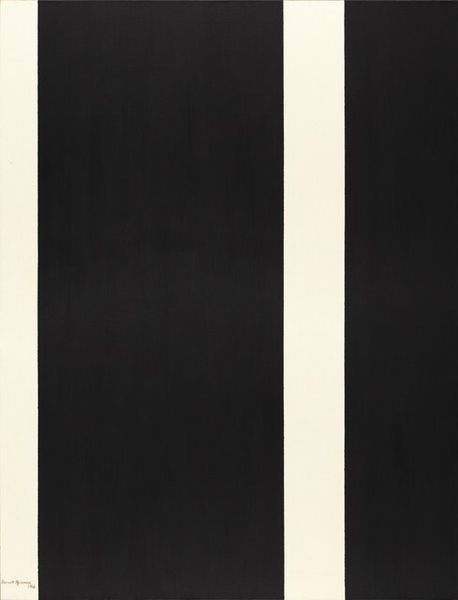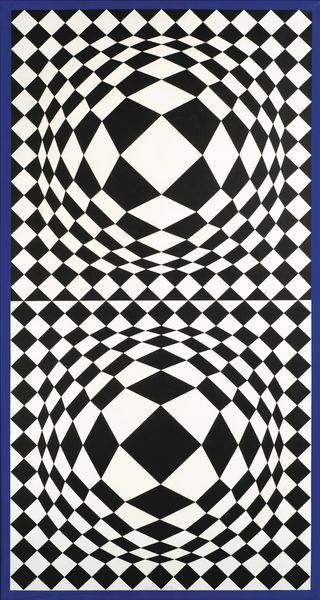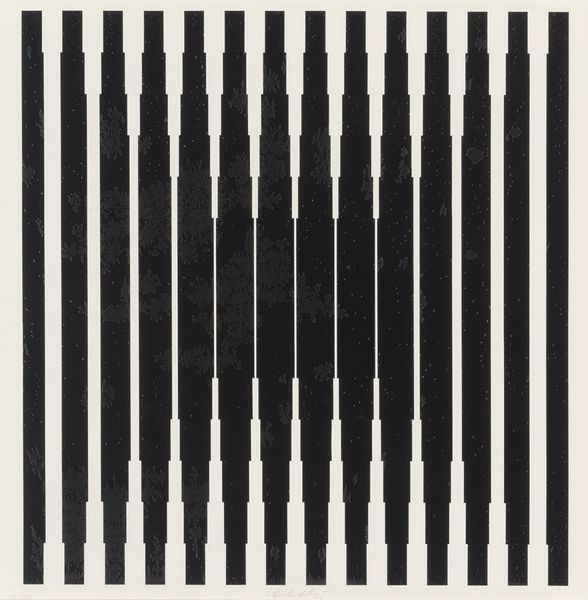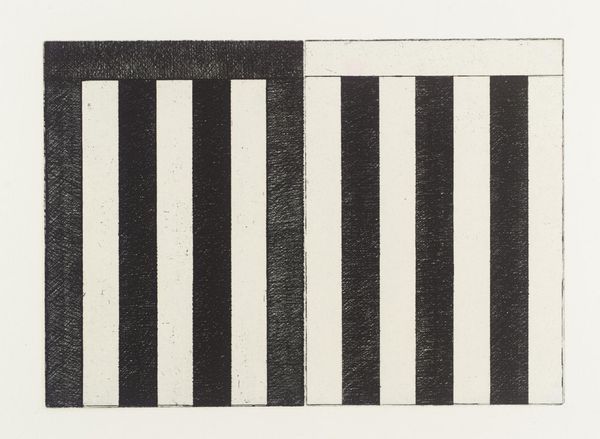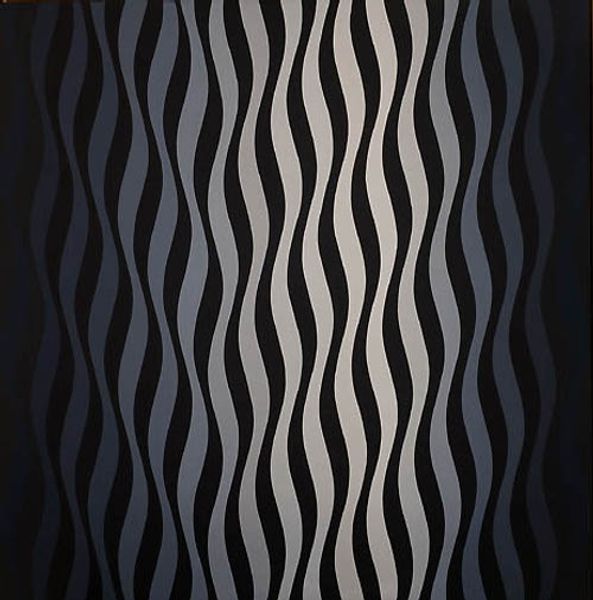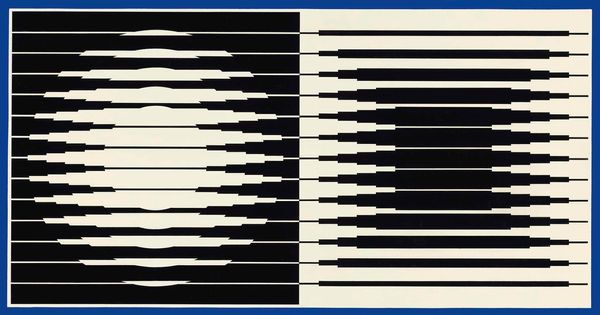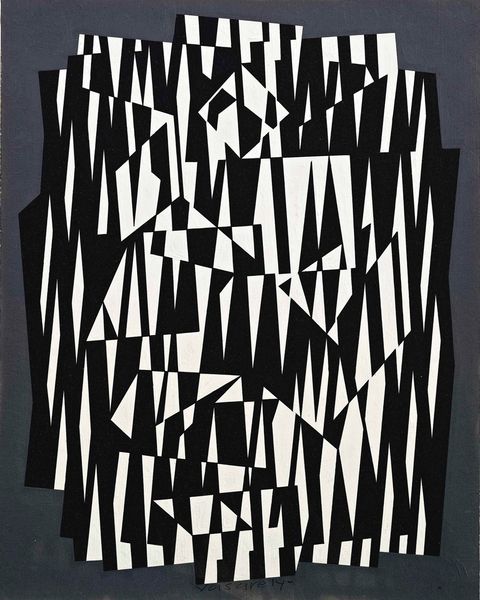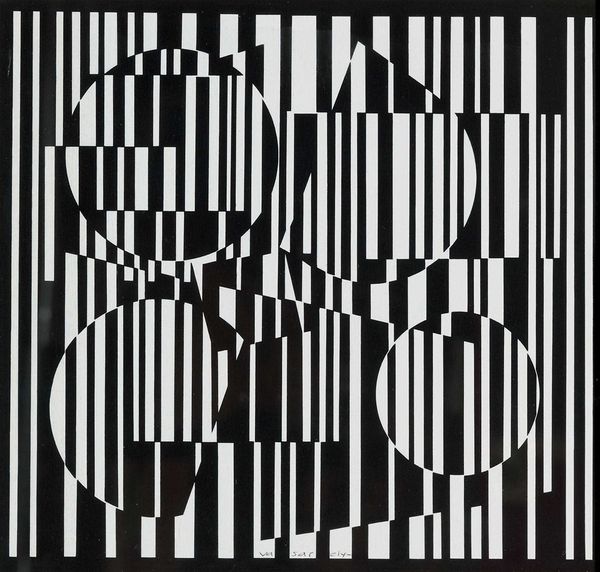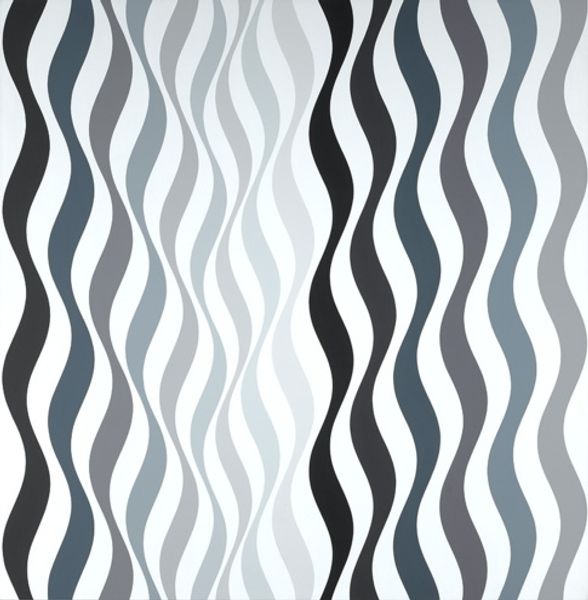
painting
#
painting
#
pattern
#
colour-field-painting
#
geometric
#
abstraction
#
line
#
modernism
#
hard-edge-painting
Copyright: (c) Ellsworth Kelly, all rights reserved
Curator: At first glance, it's arresting. The high contrast of black lines against the off-white creates an almost dizzying visual effect. There's a strong sense of organized chaos. Editor: Here we have Ellsworth Kelly's "Cite," created in 1951. It's currently housed here at SFMOMA. This painting really exemplifies hard-edge painting and Kelly’s commitment to abstraction, don’t you think? Curator: Absolutely. I’m immediately drawn to the flatness of the picture plane. No illusion of depth, just pure, unadulterated surface and the deliberate application of pigment. Did he consider how these lines almost vibrate against the background, how they interact with natural light in the room? It almost transforms the gallery space into another canvas. Editor: And what’s fascinating is how that relates to the historical moment. Post-war America, a period of rebuilding and redefining. These geometric shapes, these lines, speak to ideas of structure and fragmentation that were incredibly present at the time. The visual language feels… almost architectural, wouldn't you say? Echoes of urban planning perhaps, amidst mid-century ideologies. Curator: Precisely! It is about process – how visual order is established on a plane. Also consider the craft. The scale belies a sense of monumental labour – a deliberate undertaking of applying paint to shape, form, rhythm. It pushes a simple construction. Editor: The title itself, “Cite,” directs our attention, compelling us to engage in active dialogue rather than passive viewership, even encouraging awareness in architectural spaces around us. The stripes—which some argue may symbolize the city streets—and Kelly’s ability to turn it into abstraction demands to recognize this place making and space in modern life. Curator: I hadn't considered that reading, but the connection is fascinating. It invites us to think of architecture not as a concrete given, but as subject to abstraction as much as form. Editor: Indeed. A radical idea, executed through deceptively simple means. The artist uses such minimalism in color and structure yet he evokes complex thoughts. The politics are quietly forceful and push the boundaries. Curator: Agreed. There is indeed much to ponder here. A stark reminder of the interplay between creation and consumption, that simplicity contains deeper engagement in an era defined by complexity. Editor: Well said! I find myself appreciating it anew through the lens of artistic production and its powerful connection to broader narratives.
Comments
No comments
Be the first to comment and join the conversation on the ultimate creative platform.
